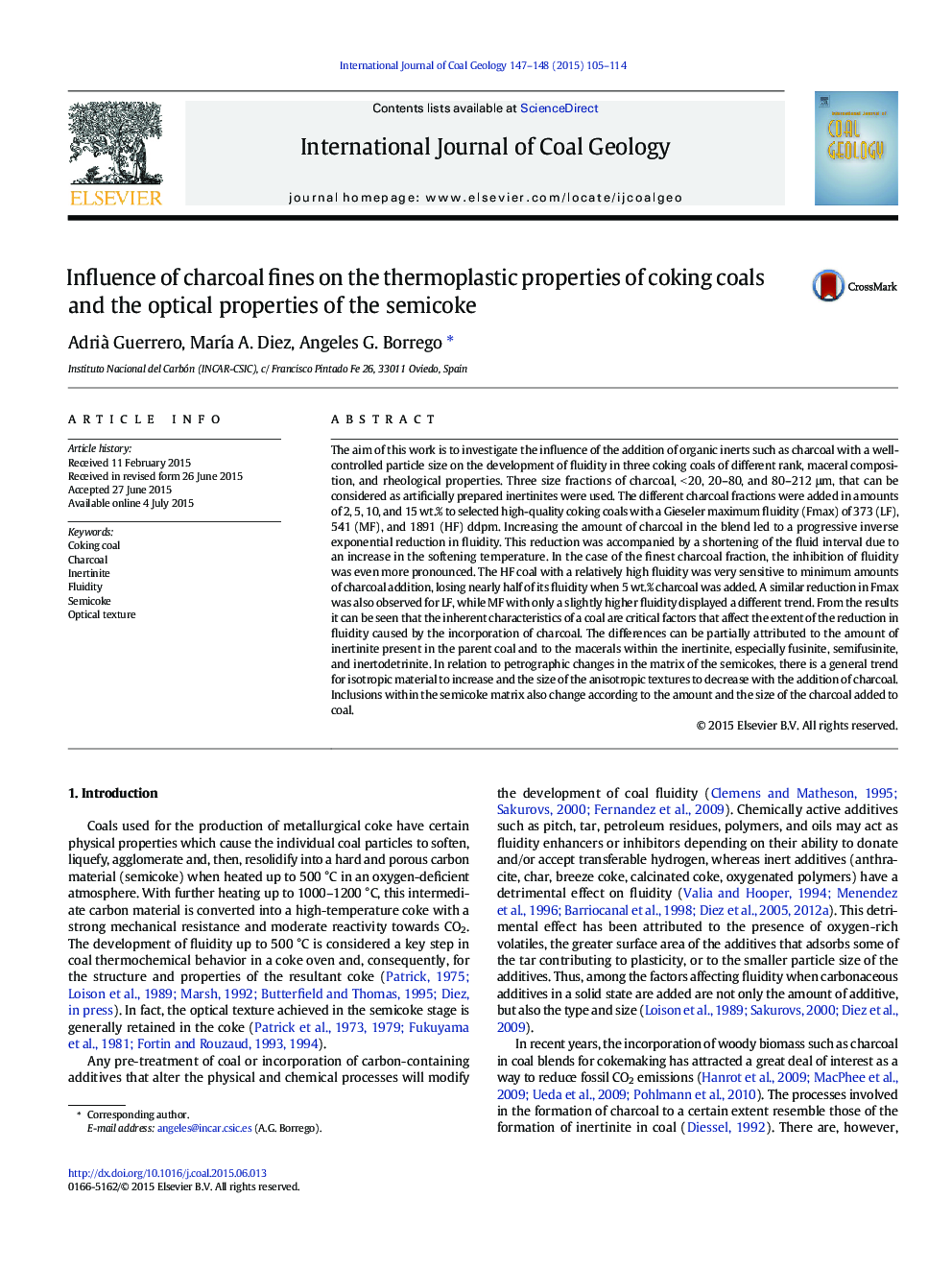| کد مقاله | کد نشریه | سال انتشار | مقاله انگلیسی | نسخه تمام متن |
|---|---|---|---|---|
| 1752940 | 1522553 | 2015 | 10 صفحه PDF | دانلود رایگان |
• The variation of fluidity with the addition of charcoal in coking coals was studied.
• Charcoal was sized in intervals within the size-range of inertinite macerals in coal.
• The smallest charcoal caused the greatest reduction in fluidity.
• The amount of inerts in the parent coal showed to affect the drop in fluidity.
• Charcoal caused a reduction in the size of the optical texture of the semicoke matrix.
The aim of this work is to investigate the influence of the addition of organic inerts such as charcoal with a well-controlled particle size on the development of fluidity in three coking coals of different rank, maceral composition, and rheological properties. Three size fractions of charcoal, < 20, 20–80, and 80–212 μm, that can be considered as artificially prepared inertinites were used. The different charcoal fractions were added in amounts of 2, 5, 10, and 15 wt.% to selected high-quality coking coals with a Gieseler maximum fluidity (Fmax) of 373 (LF), 541 (MF), and 1891 (HF) ddpm. Increasing the amount of charcoal in the blend led to a progressive inverse exponential reduction in fluidity. This reduction was accompanied by a shortening of the fluid interval due to an increase in the softening temperature. In the case of the finest charcoal fraction, the inhibition of fluidity was even more pronounced. The HF coal with a relatively high fluidity was very sensitive to minimum amounts of charcoal addition, losing nearly half of its fluidity when 5 wt.% charcoal was added. A similar reduction in Fmax was also observed for LF, while MF with only a slightly higher fluidity displayed a different trend. From the results it can be seen that the inherent characteristics of a coal are critical factors that affect the extent of the reduction in fluidity caused by the incorporation of charcoal. The differences can be partially attributed to the amount of inertinite present in the parent coal and to the macerals within the inertinite, especially fusinite, semifusinite, and inertodetrinite. In relation to petrographic changes in the matrix of the semicokes, there is a general trend for isotropic material to increase and the size of the anisotropic textures to decrease with the addition of charcoal. Inclusions within the semicoke matrix also change according to the amount and the size of the charcoal added to coal.
Journal: International Journal of Coal Geology - Volumes 147–148, 1 August 2015, Pages 105–114
